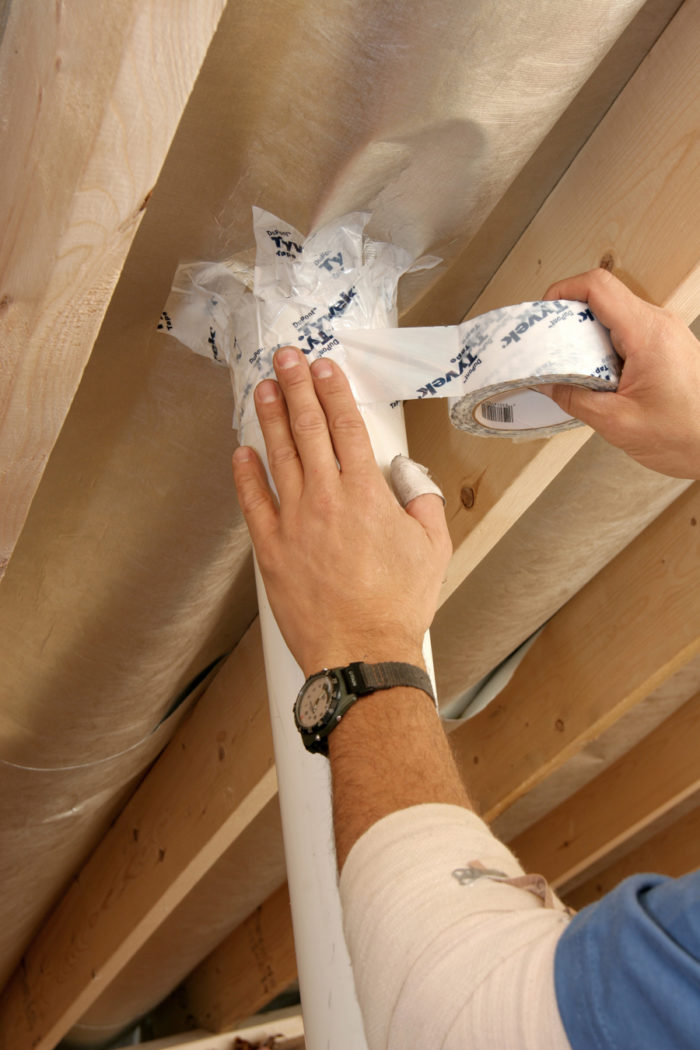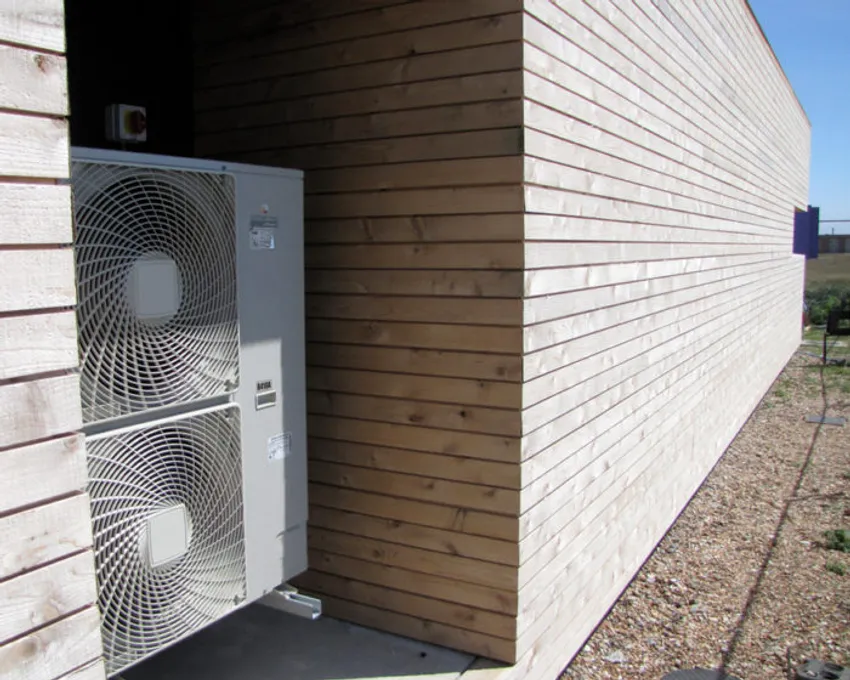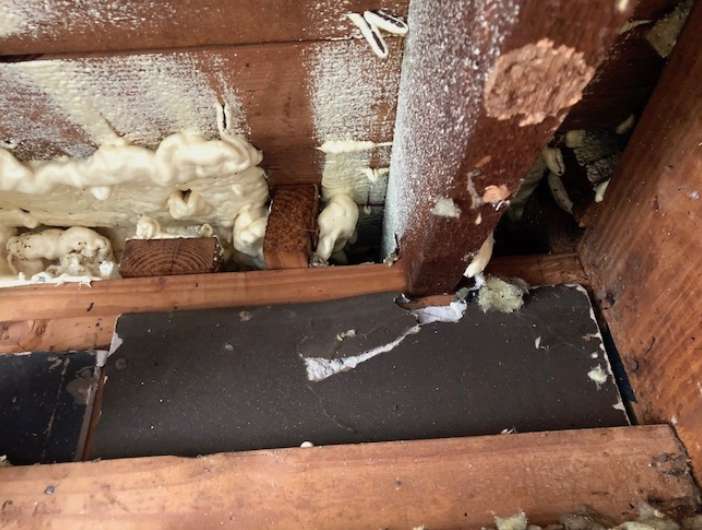
In my last article, I discussed ACCA Manual J, the industry standard for calculating design heating and cooling loads. These design loads represent the amounts of heating and cooling (in Btu) that a house requires to remain comfortable at very cold and very hot temperatures. Load calculations provide the basis for selecting heating and cooling equipment. To achieve optimal comfort and efficiency, the equipment selected must be neither too large nor too small.
Manual J considers heat losses and gains through opaque surfaces like walls and ceilings, through windows, skylights, and glass doors, through infiltration (air leakage) and mechanical ventilation, and, for cooling loads only, heat gains from people and appliances. It also adds losses and gains from ductwork passing through unconditioned spaces.
In this article, I’ll dig deeper into how Manual J calculates infiltration loads. Load calculation software makes it easy to treat infiltration as a “black box”; the user makes a few clicks, and the software does the rest. But infiltration is a critical component of heat losses and gains; in older houses and cold climates, it is often the single largest source of winter heat loss. Errors in infiltration inputs can lead to oversizing or undersizing. Understanding the processes driving infiltration—and how these translate into heating and cooling Btu—can help HVAC designers deliver consistently good results.
Infiltration basics
In winter, outdoor air leaking into a house needs to be heated to indoor temperature. In summer, outdoor air leaking in needs to be cooled and, in humid climates, dehumidified. (Because it’s the air leaking in that must be conditioned by the HVAC equipment, Manual J focuses on infiltration. The air coming into the house is balanced by an equal quantity of air leaving the house through exfiltration.)
For air to move into or out…
Weekly Newsletter
Get building science and energy efficiency advice, plus special offers, in your inbox.

This article is only available to GBA Prime Members
Sign up for a free trial and get instant access to this article as well as GBA’s complete library of premium articles and construction details.
Start Free TrialAlready a member? Log in















8 Comments
Wow, in-depth info! In terms of how common issues impact heat/cooling load, can you give a short list of most important items to address? Air sealing seems VERY important based on this analysis and people's advice/experience. How much does increasing the attic insulation from say R20 to R60 impact loads in general? How about insulating the basement walls from none to R12 or so?
This is going to vary a lot depending on your climate and house design. In general, heating loads are dominated by air leakage and by low R value surfaces. Because surface heat loss is proportional to 1/R, you get a lot more benefit from taking an R-5 surface to R-10 than from taking an R-20 surface to R-60. Cooling loads are usually dominated by solar gains. If ductwork goes through unconditioned spaces, duct losses and gains can also become a large component of both heating and cooling loads.
One way to explore how this will impact a specific project is to use a free online calculator like loadcalc.net (this is not a true Manual J calculation). You can model a "baseline" house then look at how different improvements affect the design loads.
thanks for the reply. that makes a lot of sense - focus on getting a base level of R after air sealing for biggest bang. i need to play with a calculator some.
Great work, Jon
You make this very important statement.
"One point worth considering is that indoor-outdoor temperature difference enters into this calculation twice: once when calculating stack-effect air leakage and a second time when converting air leakage to Btu. This means that heat loss from air leakage increases exponentially with temperature differences. A 10% increase in ΔT could lead to a 20% or more increase in infiltration heat load."
This is why heating systems can struggle with design temperature conditions. Meticulous air sealing in new construction or energy retrofits is time and money well spent.
Thanks, Doug. I always used to think that heating demand increased linearly with ΔT, but I'm beginning to realize there are some non-linear effects like this that we need to take into account.
Hi,
Great article.
I would like to correct an important mathematically error in the article.
The heat loss due to stack does _not_ depend exponentially on Delta T.
It (just by reading the formulae) depends on DT^3/2 power, so super linear and sub quadratic. (I'm not sure that 3/2 trend has a special name).
A 10% increase in DT would yield a ~40% increase in heat loss if the constant of proportionality was 1.
Also a question. If you do a multipoint regression of the form you can learn a constant related to the effective leakage area, per this paper: https://eta-publications.lbl.gov/sites/default/files/12891.pdf
(See description of Eq (1) on the top of page 3).
What is the relationship?
EDIT: The link you referenced answers the question:
ELA4 = 0.2835 x C*4^n
Here C,n are the parameters estimated in the multipoint blower door.
For me C = 210.6, and N=.695 so this method produced .2835*210*4^.695 = 156 sq inches of leakage or 1 sqft. slightly lower than the 176 sq in by the multiply CFM50 by .055
I've been using CoolCalc to work on an aggressive Manual J report. The duct system only conditions the first floor of a two story house over a basement. I have results from a recent blower door test and have converted to ELA4. Should the ELA4 value that I enter be scaled down to consider the volume % of the house that is being served by the HVAC system?
I have all rooms of the house entered into CoolCalc, and select just the first floor to be included in the calc for the HVAC system. If I choose rooms outside of the first floor to be included, then the heat load assigned to infiltration increases. If I artificially increase the size and external exposure of non-conditioned rooms, the heating load does not change.
The CoolCalc Manual J results currently have the Infiltration as more than 25% of the heating load, so I want to account for this correctly.
Thank you
Hi Steven. I'm not that familiar with CoolCalc, but I assume it follows the Manual J procedure for room infiltration loads. The Manual J procedure pro-rates the infiltration for each conditioned room or zone as a fraction of the total based on wall its relative area. This essentially ignores stack effect, which tends to result in infiltration low in the house and exfiltration higher up. When I'm designing a multizone system in my area (CZ 5/6, heating dominated), I will tend to put a little more capacity in the lower floors and a little less upstairs to account for this. For an interesting read on this subject, see this article by Ian Shapiro: http://www.homeenergy.org/show/article/id/2208
Log in or become a member to post a comment.
Sign up Log in